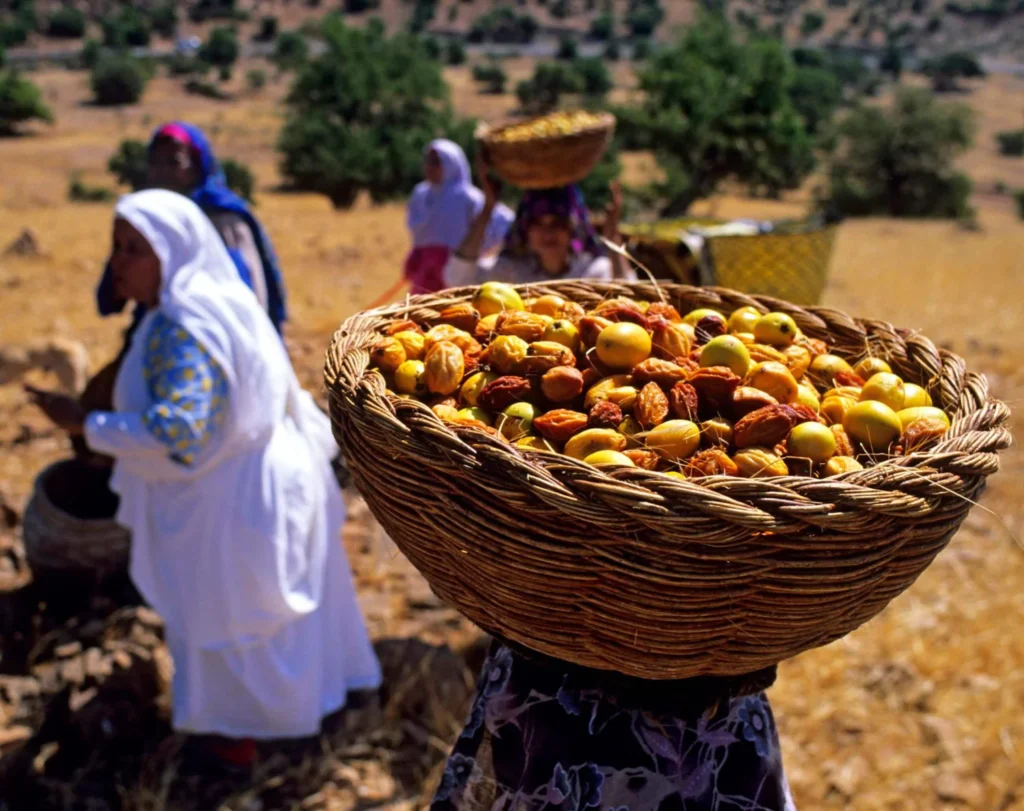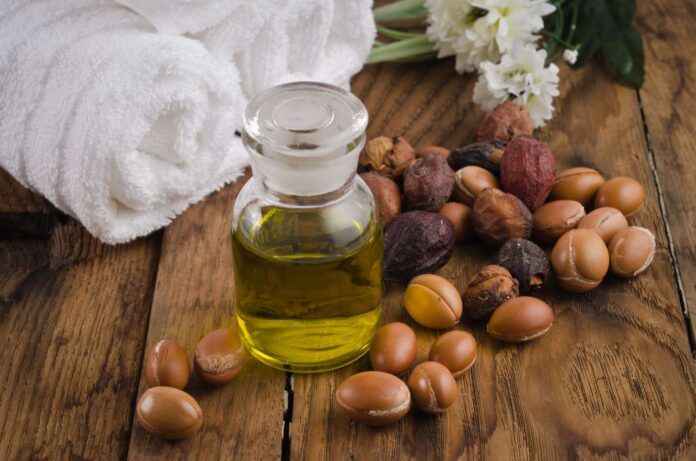Introduction
The Argan tree has long been a staple of Moroccan culture and local livelihoods. Native only to southwestern Morocco, these spiny, drought-resistant trees thrive in some of the harshest conditions on earth, covering nearly one million hectares of semi-arid land. Beyond their ecological value in combating desertification, Argan trees also produce a nut that is prized for its culinary and cosmetic properties. Argan oil, extracted from the kernels of the fruit, is renowned internationally for its nutrients, antioxidants and moisturizing abilities.
However, for centuries Argan forests were under threat from overgrazing, deforestation and unsustainable harvesting practices. Now, thanks to community-led conservation efforts, perceptions are changing. Moroccans and international organizations alike recognize the importance of nurturing these unique trees to ensure their survival for generations to come. Through sustainable management and developing Argan as a source of fair livelihoods, entire communities are revitalized.
In this article, I will explore the traditional and modern uses of the Argan tree, threats it has faced through history, and grassroots initiatives working to promote sustainable Argan harvest. By outlining challenges and successes, my goal is to showcase how with care and cooperation, a balance can be found between economic needs, environmental protection and cultural heritage. With forethought and community involvement, Argan forests and the people who depend on them have a bright future.
Traditional Uses of the Argan Tree
Argan trees have been integral to Berber culture in Morocco for centuries. Every part of the tree has traditionally had a use – from food and medicine to construction materials. Its ability to thrive with scarce rainfall made it a mainstay in some of the driest regions.
The nuts produced by female Argan trees have long been harvested and consumed locally. Argan oil, produced by cold-pressing the kernels, is a culinary staple. It is used for flavoring tagines and couscous dishes, in salad dressings, and as a dip for bread. Berbers also consumed Argan fruits directly when other sources of nutrition were scarce. The pulp surrounding the seeds is edible once fermented.
Medicinally, Argan kernels and their oil have been employed to treat various conditions. Argan oil, high in vitamin E and essential fatty acids, is applied topically to soothe skin ailments like dermatitis and eczema. It is also believed to improve blood circulation and act as an anti-inflammatory when consumed internally. Local populations attributed anti-aging properties to the oil as well and used it to prevent stretch marks.
For centuries, Argan wood has provided fuel and building materials in remote rural villages beyond the reach of conventional resources. The hardy, drought-resistant trees were used for house and fence construction, animal shelters, utensils, furniture and more. Their thorns even served dual purposes as fencing and natural protection against livestock predators. Every part of the Argan ecosystem had a valuable function for survival in hostile climates.
Modern Uses and International Appeal
While traditional uses still remain important culturally, Argan products have also gained worldwide recognition in recent decades for their cosmetic and nutritional benefits. Cosmetics companies, nutraceutical brands and small artisanal cooperatives have commercialized Argan oil on an international scale.
Prized for its high concentration of vitamin E, essential fatty acids and antioxidants, Argan oil is touted as a powerful anti-aging product. It retains moisture in skin and hair without clogging pores. The oil absorbs quickly without feeling greasy, making it an increasingly popular natural active ingredient in cosmetics. Premium organic Argan oils command high prices, with demand driven by health-conscious global consumers.
In the culinary space as well, interested in nutritious foods with ethically sourced ingredients, Argan oil has found new markets. It is incorporated into not only Moroccan dishes abroad but artisanal products like dips, crackers, roasted nuts and confections as well. Nutraceutical formulators highlight its nutritional profile promoting cardiovascular, cognitive and skin health.
With growing international demand and lucrative market opportunities, Argan has become a major driver of local economies and women’s cooperatives in Morocco. Cooperatives process Argan nuts into culinary-grade and cosmetic-grade oils, generating fair incomes for thousands of women while conserving the forests. This tree crop has potential to spur rural development sustainably for future generations.
Deforestation and Overharvesting Threats
Despite the Argan tree’s economic and cultural importance, these unique forests faced severe depletion through much of their history due to overgrazing, firewood harvesting and unchecked domestic grazing. By the 1980s, only an estimated 15% of original Argan forest cover remained.
Livestock herders traditionally let goats roam freely under Argan trees to feed on fallen fruits and foliage. However, with rising human and livestock populations, too many animals concentrated in forest areas caused overgrazing. Goats ate seedlings and bark, preventing regeneration. Without barriers, herds also trampled delicate growth.
Similarly, people harvested Argan wood unsustainably as a primary fuel source in regions lacking fossil fuels or electricity. Whole trees were felled rather than just pruning branches. Deforestation accelerated erosion and desertification of fragile lands in the coastal Souss-Massa river basin where Argan trees concentrated.
The Argan harvest itself faced issues of over-collection and waste. Fruit fell ungathered as people scrambled to collect the most volume, not allowing nuts to fully mature. Kernels were also cracked manually with inefficiency, wasting nearly half the edible material. As forests dwindled and harvests declined in turn, poverty increased pressure on the remaining trees. An extractive cycle emerged that jeopardized long-term viability.
Recognizing the threats, in 1998 the Moroccan government established the Arganeraie Biosphere Reserve spanning 600,000 hectares of degraded Argan forest. However, top-down conservation alone had its limits without addressing socioeconomic drivers at the grassroots level. Alternative livelihood options were needed to motivate behavioral change and community participation in regreening efforts.

Sustainable Harvest and Development Initiatives
In recent decades, innovative projects have emerged to promote sustainable Argan use through integrated rural development and conservation models. These community-led initiatives are achieving positive impacts with collaborative, economically-empowering approaches.
Managed Grazing Practices
Participatory programs encourage herders to rotate and limit livestock access, allowing controlled grazing that does not damage regeneration. Goats are moved between sparse and denser forest zones while also supplementing Argan fodder with external feed. Benefits include reduced overgrazing and collection of fallen fruits formerly lost.
Reforestation Efforts
Organizations partner with villages to establish Argan seedling nurseries and replant deforested areas. Farmers are motivated by the promise that mature trees can eventually complement livestock income through harvests. Youth environmental clubs conduct annual planting campaigns across denuded lands.
Cooperative Enterprise Models
Coops help women add value to Argan through manufacturing cosmetic oils, almond butter, arganolie spread and exports. Fair trade ensures higher prices for sustainable harvests that restore failing trees. Revenue circulates within communities to invest in infrastructure like schools reducing migration pressures on forests.
Certification Programs
Schemes like Organic, Fairtrade and UTZ certify sustainably produced Argan oil. This builds consumer confidence and market access for rural women’s groups. Premium pricing provides the incentive to protect forests as natural capital vs destructive extraction. Traceability also combats illegal sourcing threats to remaining trees.
Biochar Utilization
A project uses biochar, a soil enriching byproduct of Argan kernels pyrolysis, to regenerate bare earth. This sequesters carbon while improving water retention and yields on previously degraded parcels. Greater agricultural productivity reduces pressure to deforest more land.
Alternative Energy
Solar electricity and efficient cookstoves curb woodfuel demand that drove deforestation. This eases pressure on remaining Argan trees as a wood source, allowing natural regeneration without human disturbance or harvesting risk to the vulnerable species.
Education and Awareness
Outreach informs locals and herders about tree biology, growth cycles and sustainable practices. Youth learn traditional eco-friendly land management through environmental clubs. Signage at tourist sites raises international visibility on unique forest values and conservation challenges to motivate support.
Community Forest Management
Village committees demarcate reserves and patrol for illegal logging with support from cooperative revenues.This grassroots authority over nearby forests gives locals tangible incentives to protect the resource base sustaining their livelihoods and cultural heritage for generations.
Impacts and Successes of Sustainable Initiatives
These integrated community development and conservation efforts are achieving measurable impacts after nearly two decades of implementation across Morocco’s Argan forest range. Some notable successes include:
- Reforestation – Over 60,000 hectares of degraded land previously devoid of Argan trees have been successfully regenerated through replanting campaigns and limiting goat access to allow natural recruitment.
- Income generation – Thousands of rural women earn steady incomes through Argan oil cooperatives, reducing pressures driving deforestation like fuelwood harvesting and migration to cities. Total sales have multiplied 17-fold since 2000.
- Livelihood diversity – Alternative activities introduced including argan woodcrafts, apiculture and ecotourism provide supplementary income streams that further deter extraction mindsets.

